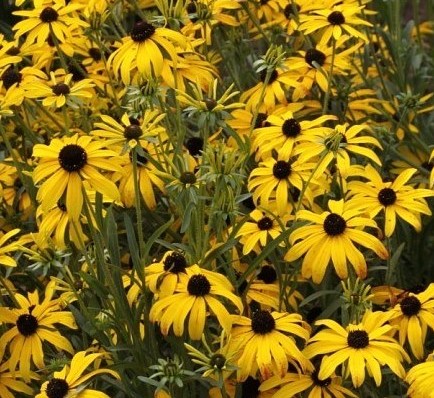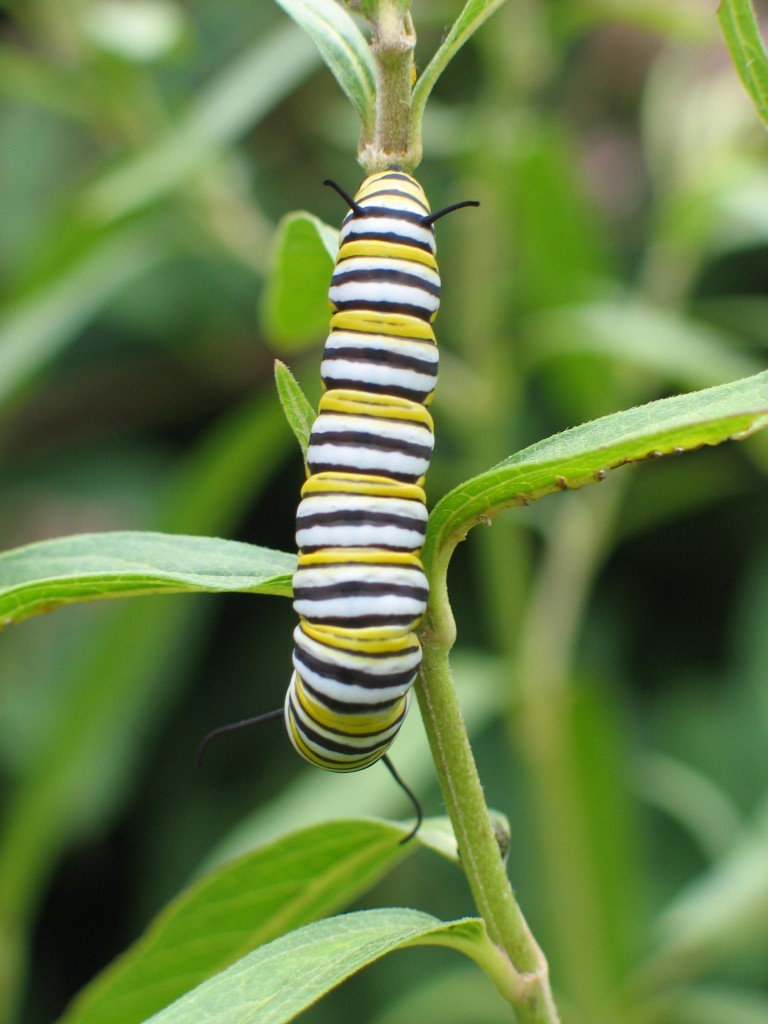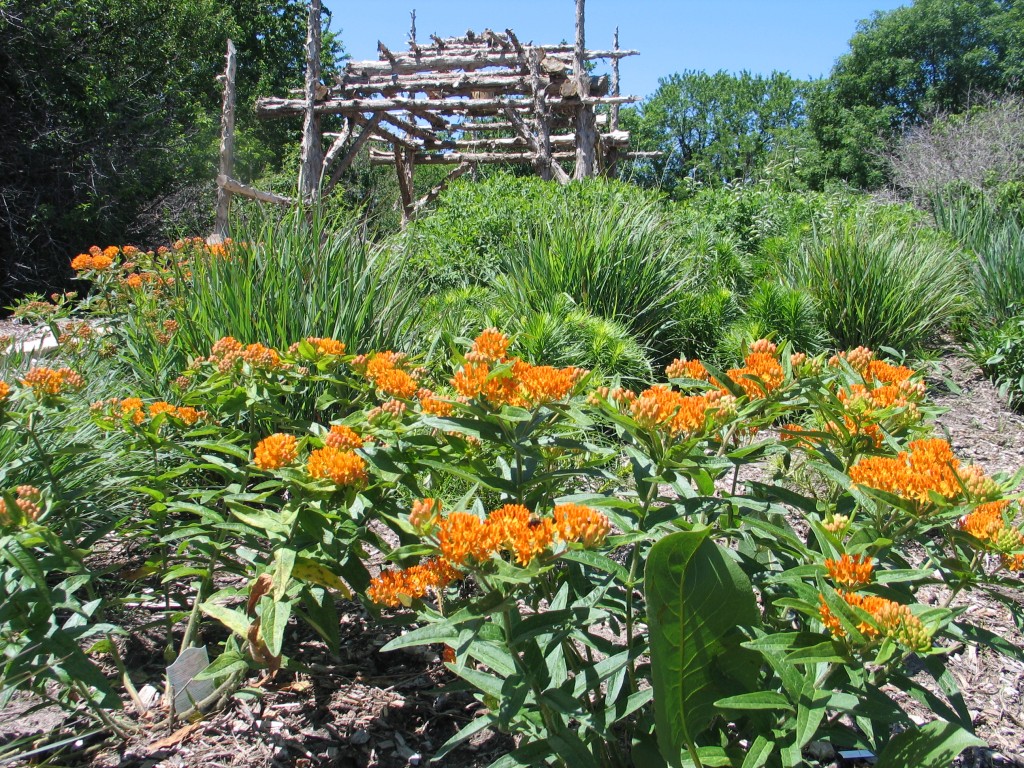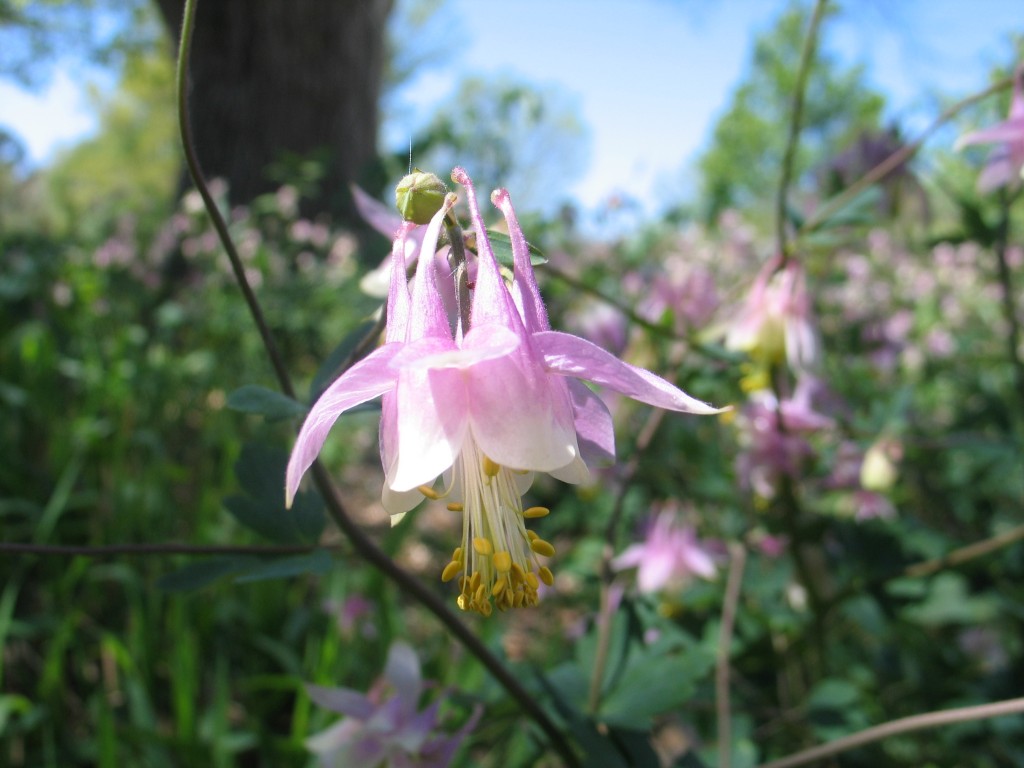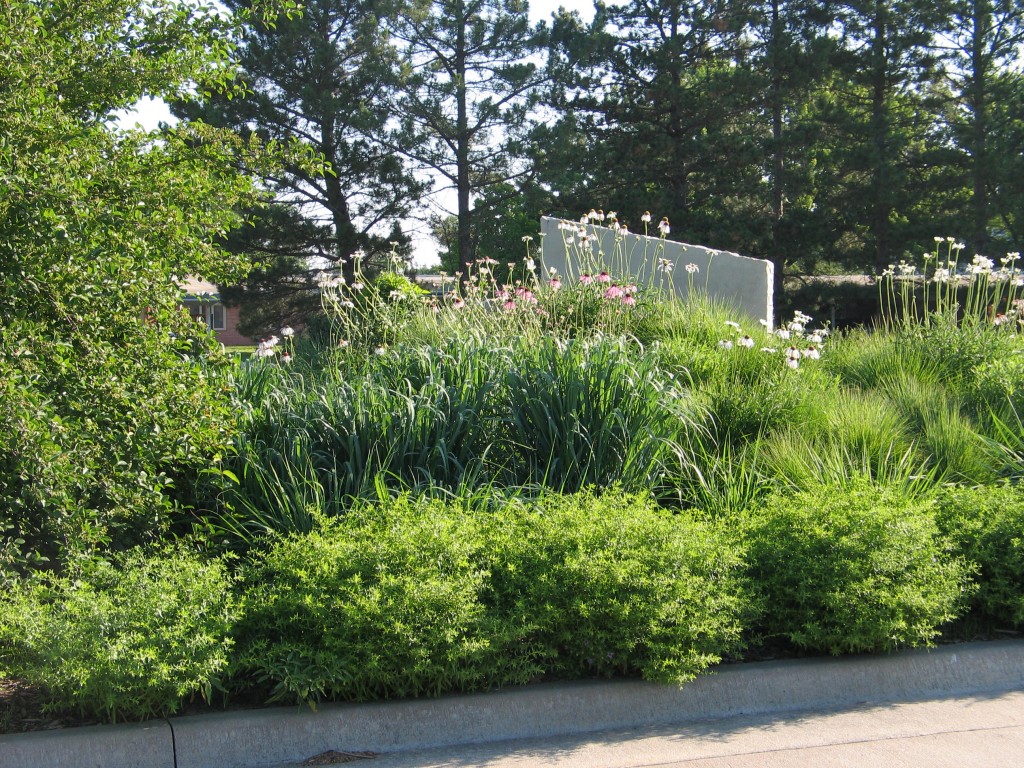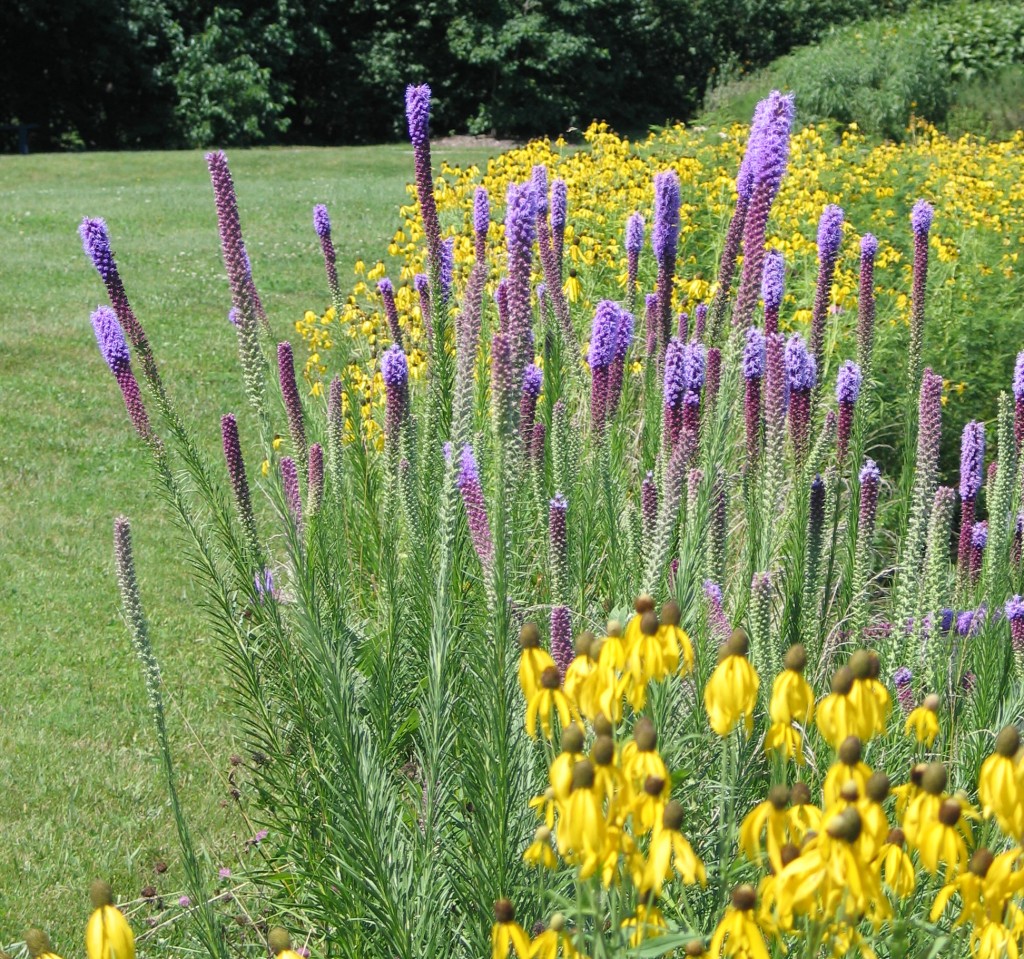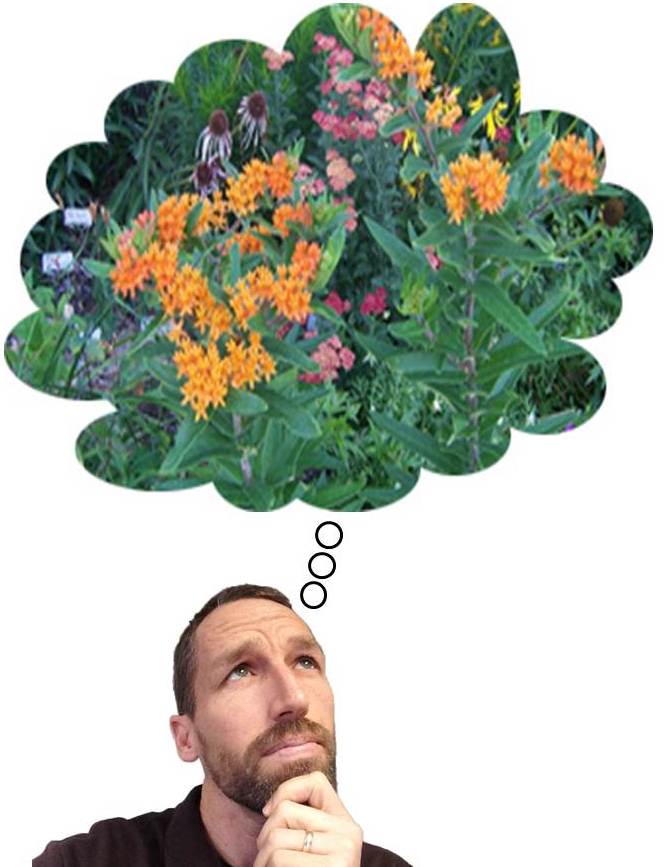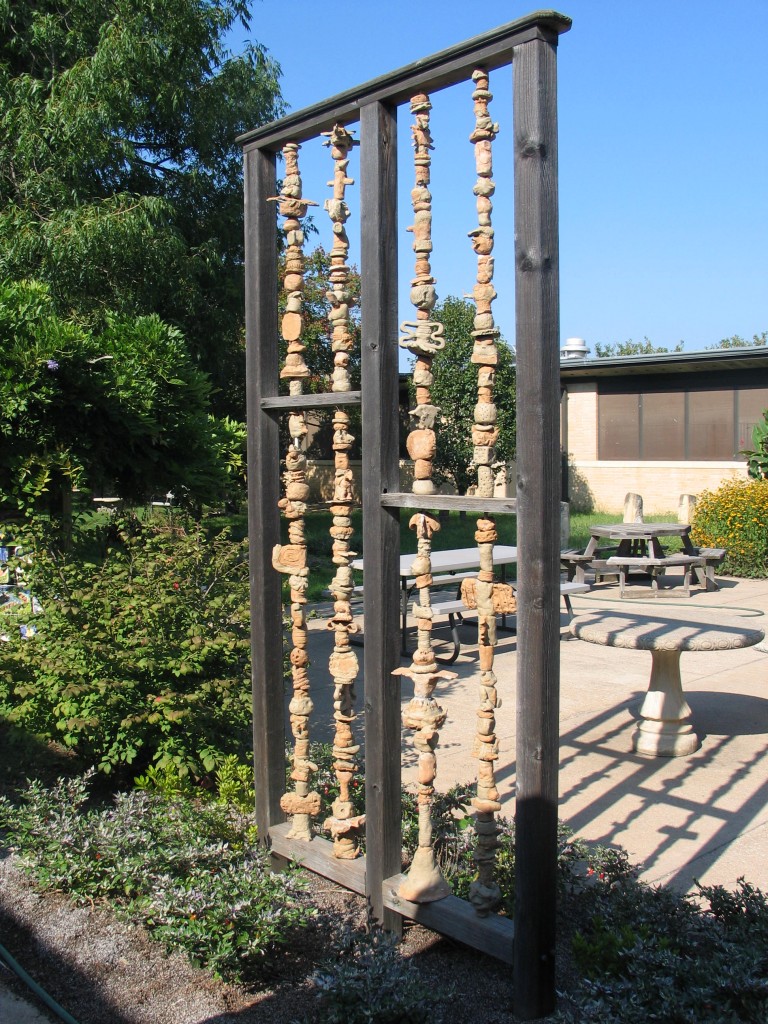The prairies of the Great Plains are diverse and complex. They are often overlooked and taken for granted. They are subtle in beauty, but resilient. Because of the many benefits the prairie provides to us and the environment, it is an ecosystem worth saving. Here are five benefits of native plants – though there are certainly more that we will experience as we begin to utilize these plants in our landscape:
-
Low Maintenance
There is no such thing as a no-maintenance landscape. Native plants still need some care, but compared to a traditional landscape with a lawn, tidy shrubs and a few trees surrounded by perennial beds, native plants are extremely low in maintenance. Native plants are adapted to our climate and can grow in the toughest environments. Once established, their deep roots take them through prolonged periods of drought. It was great to see native plants blooming in the fall of 2012 after so many days of scorching heat. The blue sage, heath aster, goldenrod, little bluestem, and switchgrass brightened up our prairie reconstruction. It was a testament to their toughness. The slide below illustrates exactly why native plants are so much more resilient than the typical lawn – notice the difference in the root system of turf grass (far left) to many of the most common wildflowers and grasses of the prairie.
-
Saves money
There are obvious savings associated with a native landscape compared to maintaining a traditional landscape. A native landscape uses less water, little or no fertilizer and no chemicals or pesticides, which in turn saves you time. I am frugal and a native landscape is a low cost alternative to a traditional lawn-dominated landscape. Conservation and stewardship are trends that help you and the environment.
-
Water
We have seen an increased interest in native plants because of the water they save once established. Many homeowners are decreasing their lawns as a way of saving water and money. Most roots on a fescue or bluegrass lawn are only three to four inches deep compared to prairie wildflowers and grasses that develop extensive root systems several feet deep. Big Bluestem grass for example establishes roots up to ten feet deep. With a shallow root system, a typical lawn requires ten gallons of water per square foot through the summer to keep it looking green. If you minimize your lawn, you will begin to diminish your dependence on water. Click here for an example of a Waterwise Landscape Design.
-
Beautiful plants
If you have ever walked through a pristine prairie or observed the changing seasons in the Flint Hills, you know the exquisite beauty of wildflowers in bloom coupled with native grasses. It is understated and taken for granted. I am always amazed at the complexity and intricacies of these prairie plants. They create a very unique sense of place.
-
Attract pollinators and wildlife
Pollinators and wildflowers have a symbiotic relationship. If you have wildflowers you will have butterflies. There have been over 20 documented butterflies in the arboretum during the butterfly counts. They seek out our wildflowers and utilize them throughout the year. Monarch populations are declining. They need milkweeds, and since we have milkweeds in the arboretum, they show up. Read this article on how to encourage and sustain the monarch butterfly population by planting milkweed varieties. Also, just like the Monarchs, songbird populations are declining. They need prairie habitat for survival along with wildflower seeds to feed overwintering birds.
There are more reasons to grow native plants, but you get the idea. Prairie is good, not only for you, but also for the environment. The many benefits far outweigh negative perception. When you plant native wildflowers and grasses, you will be rewarded time and again for your prairie habitat. I don’t know how we got away from our regional identity of a prairie landscape, but it is essential to who we are and what grows best here.
Join us in re-establishing some prairie roots in your own yard, and then spread the word by sharing this information with your friends.

